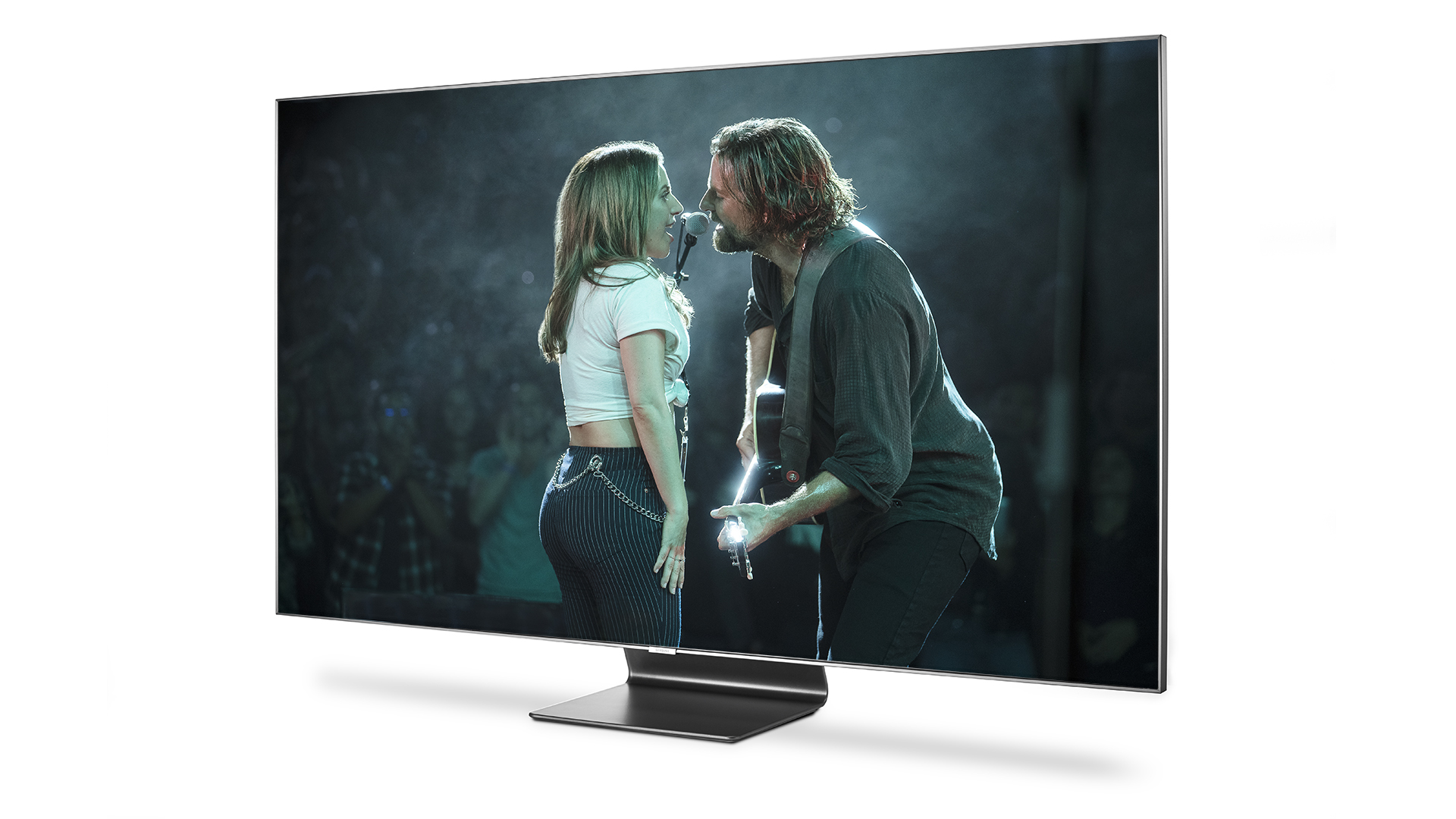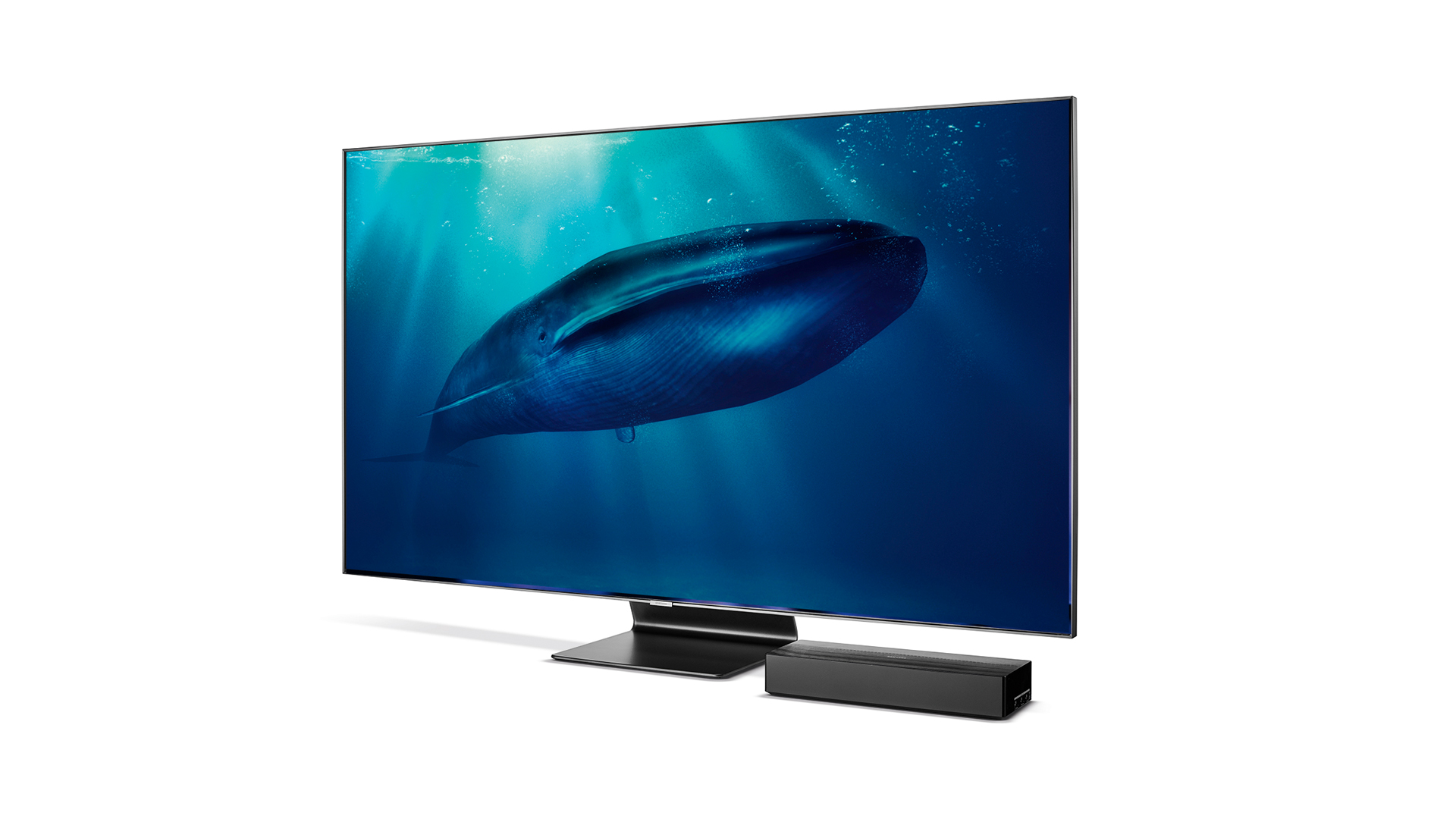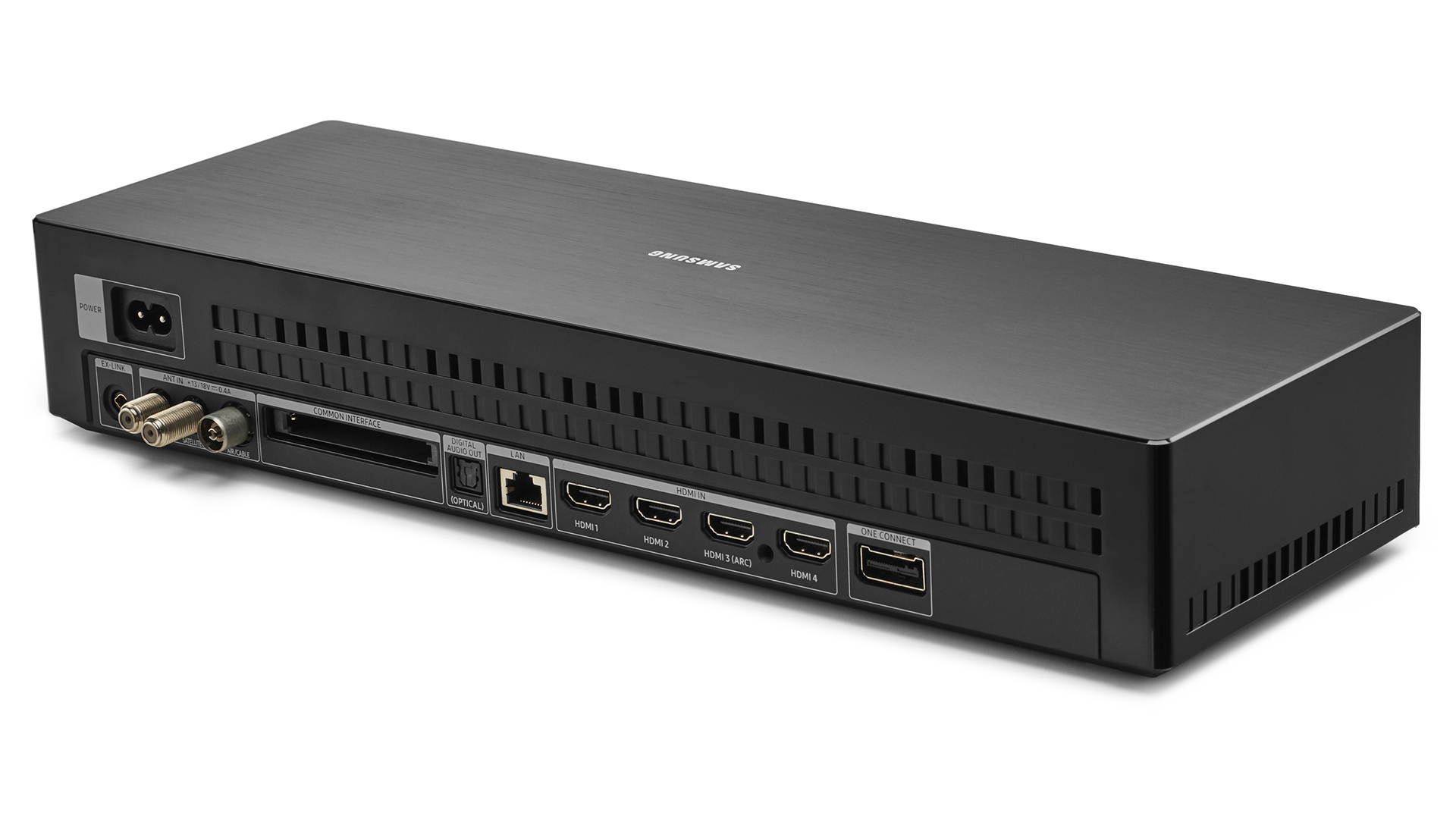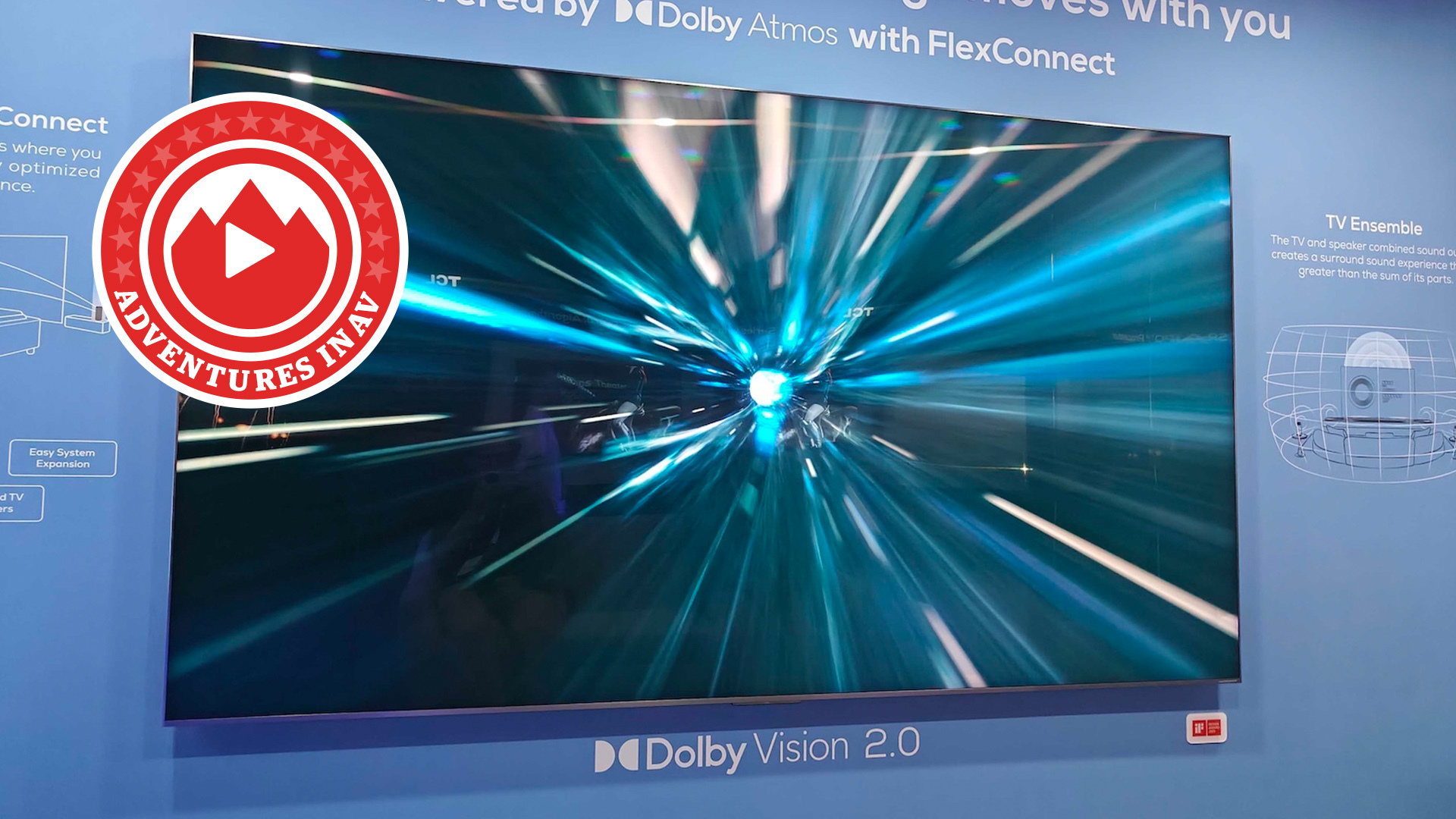What Hi-Fi? Verdict
A QLED that does things only an OLED previously could, the Q90R is an exceptional telly
Pros
- +
Natural, authentic colours
- +
Deep, detailed blacks
- +
Wide viewing angles
Cons
- -
Motion processing not perfect
- -
Others sound better
Why you can trust What Hi-Fi?
Being excellent simply isn’t good enough for Samsung. Only the very best will do. That’s why, despite its 2018 4K flagship being the best TV it had ever produced, with a performance way beyond that of any other backlit set, Samsung fixated on the few flaws that prevented it from winning a What Hi-Fi? Award.
But thankfully, Samsung hasn’t thrown the baby out with the bathwater. The new Q90R is every bit the belter that the Q9FN was, but with practically all of its flaws fixed. Not only is it the best backlit set we’ve ever tested, it also plays its OLED rivals at their own game.
Here we've reviewed the 65in version of the Q90R (the QE65Q90R to give it its complete name), but it's also available in 55in (QE55Q90R) and 75in (QE75Q90R) varieties.
Picture

The main criticism of 2018's Q9FN (and QLED as a whole) in comparison to OLED rivals, is viewing angles. It’s no surprise, then, that Samsung has prioritised trying to fix this particular problem.
Called Ultra Viewing Angle, Samsung’s new feature involves extra layers on the panel that reduce light leakage and spread light uniformity. The result is near-flawless viewing angles. Even at the widest angles, colours remain vibrant and blacks remain pure. This no longer appears to be an obvious advantage of OLED, and that’s a huge step for Samsung.
And while the Q9FN was capable of producing deep blacks for a non-OLED, we still sensed that dark detail was being lost. Samsung over-compensated with its Q900R 8K sets, which sacrificed too much depth in the pursuit of detail and looked a little washed-out, but this new Q90R strikes a superb balance.
Play the scene in Harry Potter And The Deathly Hallows Part II where Voldemort’s army of wizards amasses on a hill above Hogwarts, and the difference in the delivery of last year's Q9FN and 2019's Q90R is stark. On the newer model you can see so much more of the scenery and the structure of Hogwarts. But there’s no washing-out of the blacks and nothing that looks like artificial enhancement.
The latest hi-fi, home cinema and tech news, reviews, buying advice and deals, direct to your inbox.
When the camera closes in on Voldemort, it’s clear that the Q90R has no trouble with bright objects in otherwise dark scenes. Where the Q9FN would occasionally hold back to avoid creating a visible halo around the lit object, Samsung has improved the precision of its backlight (which retains the Q9FN’s peak brightness figure of 2000 nits and approximately 500 dimming zones) and so can confidently light bright objects with little fear. The result is that while Voldemort looks a little shadowed on the Q9FN, his white skin is creepily luminescent on the Q90R. Only very tiny, very bright objects on completely black backgrounds (small credits at the start of a movie, for instance) cause the Samsung to be cautious with its light levels.
Having watched umpteen films and TV shows, via discs, streaming apps and the Freeview tuner, during our test of the Q90R, we’ve really been struck by the authenticity of its colours. Where the Q9FN was a little warm in its approach to colour, the Q90R strikes a slightly cooler, more neutral balance, with no loss of punch or vibrancy. The Q9FN’s rosy hue occasionally draws the eye away, but with the Q90R you get all of the dynamism of the picture and a greater sense of realism.
Play the opening of Guardians Of The Galaxy Vol.2 and the Q9FN looks a little sunburnt in the ploughed fields and a bit pink in the clouds. The Q90’s fields are a little more natural and organic, and its clouds are purer. As the camera pans in on the occupants of the Ford Mustang, the colour balance improvements become clearer, with the slight flushing of faces of the Q9FN being dialled down without skin tones becoming unnaturally pallid.
The shot of the planets is even more convincing. The gold on the surface is just as bright, but it avoids the slight orange tinge of the Q9FN. There’s greater edge definition, too, and a little more dynamism to the contrast, with the bright and dark elements of the planet being more pronounced and dramatic. The planet looks more solid and three-dimensional.

Screen type QLED
Resolution 4K
Operating system Samsung Tizen
HDR formats HDR10, HDR10+, HLG
HDMI 4
USB 3
Optical 1
The new Quantum Processor 4K shares many of the attributes of the Quantum Processor 8K, introduced with the Q900R range, including its AI-based approach to upscaling, which uses a vast and increasing database of images to create a more accurate algorithm. In the Q90R, it results in cleaner and sharper images from non-4K content. It’s most obvious when viewing standard-def content, which is surprisingly smooth and free of artificiality.
Disappointingly, the one aspect of performance that Samsung has seemingly chosen not to improve is motion processing. The Q9FN wasn’t exactly bad, but fell short of what most premium Sony TVs can manage and it’s a similar story with the Q90R. The Auto mode produces the sort of horribly over-processed images that get Tom Cruise all worked up, while the Custom setting, which allows for individual tweaking of Blur Reduction and Judder Reduction, still falls just short of the artefact-free, sharp and smooth balance that we’re looking for.
Of course, you can turn the motion processing off entirely, but we do appreciate the slight smoothing and sharpening of the Custom mode’s default settings, even though it is occasionally caught out by very tricky movement.
Talking of settings, there’s mercifully little that needs changing in order to get the Q90R performing its best. For HDR, you need only select the Standard preset, choose your preferred degree of motion processing and turn Digital Clean View off, while for all other content we suggest you stick with Standard, switch Local Dimming to High, drop Brightness by one point and Sharpness by five. Samsung suggests using the Movie mode when watching films, but its heavily sepia-tinted softness leaves us cold.
It’s also worth mentioning the Intelligent Mode, designed to tweak the picture and sound based on your room and the content you’re playing. We’d recommend you delve into the menus and switch the picture element (Adaptive Brightness) off.
Sound

The sound portion of the Intelligent Mode is split into two parts; Adaptive Sound, which optimises sound based on your room size, the position of your TV, and the characteristics of each scene; and Adaptive Volume, which automatically adjusts the volume based on your usage patterns and audio input.
We switch the Adaptive Volume off, but find Adaptive Sound to be worthwhile. It’s similar to last year’s Optimised Sound mode, which added extra punch, openness and dynamics, but goes further by adapting in real-time to what’s being played and analysing the acoustics of your room. The end result is a clean and open sound, particularly for a TV with more or less invisible speakers.
But last year’s Q9FN sounded a little more direct and immediate, and neither TV is up there with the current wave of audio-enhanced TVs, such as Sony’s vibrating AF9, Philips’ B&W-fettled OLED903 or Panasonic’s Technics-tuned FZ952.
Samsung’s case against the likes of the Philips and Panasonic, which have full, integrated soundbars, is that if you want better sound from the Q90R you can add one of its own soundbars, space for which is incorporated in the design. It’s a reasonable argument, but there are plenty of people who want a telly that both looks and sounds great, without the hassle of a separate box.
The chassis of the TV itself is largely unchanged from last year’s Q9FN. The metal bezel is a little less matte, but otherwise the sharp, angular aesthetic and pointy corners remain, as do the straight chunky edges. At 4cm, it’s a fairly thick TV, particularly when compared to backlight-less OLEDs, but the Q90R looks snazzy in its own right.
The key design difference between it and the Q9FN is the stand: the old, spindly pedestal has been replaced by a single, curved metal stand that gives the TV the air of a large Apple iMac. The new pedestal, which raises the TV a few centimetres higher than last year’s model, looks slightly awkward but has practical advantages – namely a smaller footprint and that space for a soundbar.
As is the Samsung way, there’s just one input on the back of the TV for the thin, largely transparent cable that runs between it and the OneConect box, which handles not only all of the inputs and outputs, but also the power. Like last year’s Q9FN, the screen section of the Q90R does not need to be plugged into the wall. Connect the OneConnect to power, run all of your sources into that and there’s just one optical cable running from it to the screen. It’s such a neat solution that we’re amazed other manufacturers haven’t copied it.
Features

In terms of physical connections, the Q90R has a typical selection of four HDMIs, three USBs, ethernet, aerial, satellite and optical out. The HDMIs aren’t officially 2.1 certified, but Samsung says the hardware is more or less there and 2.1-style features such as Variable Refresh Rate are already enabled.
Samsung’s TV operating system is already one of the best around – fast, fluid and intuitive, and majoring on getting you to what you want to watch as quickly as possible. The app selection is second-to-none. Netflix and Amazon are of course present in their full 4K HDR forms (the latter in HDR10+), as is Rakuten. BBC iPlayer, ITV Hub, All 4 and Demand 5 are all on board, too, as are Now TV and Google Play Movies & TV.
The big news is that Apple’s TV app is also now on board, bringing the biggest and best selection of streamable 4K HDR films around.
The Q90R also features the second-generation version of Samsung’s Ambient mode, designed to make use of the TV when it’s not being used for viewing. The TV blends in to the wall upon which it’s mounted, requiring just one photo from your phone to copy the pattern and colours. Alternatively you can choose from the selection of 50 Ambient modes, including petals falling across the display or silhouettes of leaves blowing in the wind. You also now have more control over the colours used in the patterns, choosing to match the shade of your curtains or sofa, for example.
It’s even possible to use the new QLED TVs as a light source, with a number of customisable light grid patterns available. You can choose romantic lighting, for example, or a party mode pattern, but we think you’re far more likely to use Ambient 2.0 to display your own photos or the pre-installed professional shots, for which there are now lots more layouts and styles.
Back to the serious stuff of HDR formats, and the Q90R supports HDR10, HLG and, of course, HDR10+. Samsung insists that we take HDR10+ as a serious rival to Dolby Vision, but while we are finally seeing content (Jack Ryan and a fair bit besides on Amazon Video, and Bohemian Rhapsody on 4K Blu-ray, for example), the implementation is still patchy at best.
The TV now tells you (via the Home menu) when you’re watching HDR10+ on Amazon Video, but not when HDR10+ is being sent by a Blu-ray player, and Amazon's app doesn't flag content as having HDR10+. There’s no dedicated HDR10+ picture mode on the Q90R, either, so the Dolby Vision-style sense that you’re seeing the content exactly as intended isn’t there. Instead, you’re getting a slightly tweaked version of the existing HDR10 picture. Or are you? It can be hard to tell.
Verdict
But getting hung up on the inconsistent implementation of HDR10+ is to not see the wood for the trees. The Samsung Q90R QLED is an exceptional TV that does things previously considered inherent advantages of OLED.
The Q90R is a backlit TV that goes almost as black as an OLED and has OLED-like viewing angles, while retaining its own advantage of greater brightness. It also boasts brilliantly judged colours and excellent dark detail, not to mention an excellent operating system packed with apps.
Let there be no doubt; the Q90R is one of 2019's best 65in TVs and is still a contender in 2020, particularly thanks to some significant discounting. And if you're looking for its successor, check out our QE65Q95T review.
SCORES
- Picture 5
- Sound 4
- Features 5
MORE:
Read our Samsung QE65Q95T review
What is QLED? How Samsung's TV tech compares to OLED
What Hi-Fi?, founded in 1976, is the world's leading independent guide to buying and owning hi-fi and home entertainment products. Our comprehensive tests help you buy the very best for your money, with our advice sections giving you step-by-step information on how to get even more from your music and movies. Everything is tested by our dedicated team of in-house reviewers in our custom-built test rooms in London, Reading and Bath. Our coveted five-star rating and Awards are recognised all over the world as the ultimate seal of approval, so you can buy with absolute confidence.

